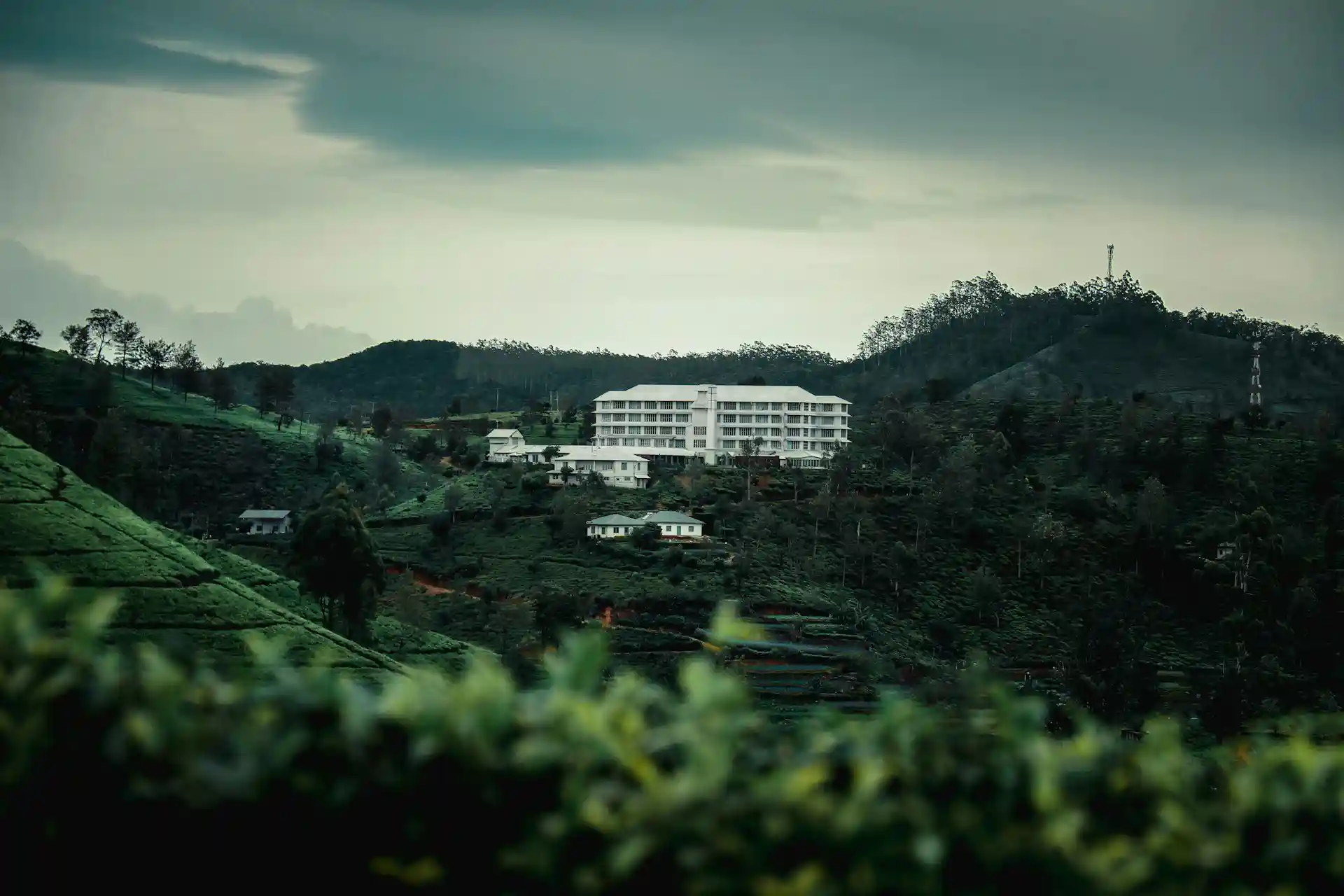Tea Plantation Tours: Inside Ceylon's Tea Legacy | Sri Lanka Guide
 https://res.cloudinary.com/daknktzcc/image/upload/v1761908759/Tea_Plantation_Tours_thumbnail_wvrgzj.webp?height=700&width=800
https://res.cloudinary.com/daknktzcc/image/upload/v1761908759/Tea_Plantation_Tours_thumbnail_wvrgzj.webp?height=700&width=800Tea Plantation Tours: Inside Ceylon's Tea Legacy
There's something absurdly civilized about sipping freshly brewed Ceylon tea at 6,000 feet, wrapped in a fleece because it's actually cold in tropical Sri Lanka, watching mist roll through emerald tea terraces that look like they've been manicured by obsessive-compulsive landscape architects. And yet here you are, essentially doing what British colonials did in the 1800s, except with better Wi-Fi and without the whole problematic empire thing.
I'll be straight with you. Before visiting Sri Lanka's tea country, I thought a tea plantation tour meant wandering through some bushes, drinking a cup of something vaguely tea-flavored, and buying overpriced souvenirs. I was spectacularly wrong. Ceylon tea tours are part history lesson, part sensory experience, part stunning landscape therapy, and honestly? They're one of those travel experiences that sounds boring on paper but completely rewires your appreciation for that beverage you've been mindlessly drinking your entire life.
Sri Lanka is the world's fourth-largest tea producer, churning out nearly 350,000 tons annually. But here's what makes it special: this is one of the last places where tea is still hand-plucked, where skilled workers (predominantly Tamil women who make this look impossibly easy) cover over 10 kilometers daily, stripping precisely "two leaves and a bud" from each bush. It's an art form disguised as agriculture.
The tea regions around Nuwara Eliya, Ella, Haputale, and Kandy aren't just agricultural zones. They're living museums, colonial time capsules, and some of the most photographable landscapes you'll encounter anywhere. The hill country's microclimate creates this perpetually dramatic atmosphere where sunshine breaks through clouds one moment, then fog rolls in the next, and tea plants just thrive in this moody, romantic setting.
The James Taylor Story: How a Scotsman Accidentally Changed Everything
Every good origin story needs an unlikely hero, and Ceylon tea's got a doozy. James Taylor, a 17-year-old Scottish kid, arrived in Ceylon in 1852 to work on a coffee plantation. Coffee was king then. Tea? Barely a footnote.
Then coffee rust disease swept through in the 1860s, devastating plantations and creating an economic crisis that would have crushed most industries. But Taylor saw opportunity where others saw disaster. In 1867, he planted just 19 acres of tea at the Loolecondera Estate near Kandy, using seeds from the Royal Botanical Gardens in Peradeniya.
His setup was gloriously DIY: hand-rolling leaves on wooden tables in his bungalow veranda, drying them on clay stoves with charcoal fires, using wire trays to air everything out. It was basically the 19th-century version of a garage startup, except instead of coding an app, he was perfecting the art of oxidizing Camellia sinensis leaves.
By 1872, Taylor had built Ceylon's first proper tea factory. In 1873, he shipped his first consignment to London: a whopping 23 pounds. Within twenty years, Ceylon was exporting over 22,900 tons annually. By the 1890s, tea had completely replaced coffee, transforming the island's economy and identity forever.
Taylor died in 1892 at age 57, having spent 40 years pioneering an industry that would define Sri Lanka for generations. Today, you can visit the Ceylon Tea Museum in Kandy to see his original equipment, including that first rolling machine he designed. It's a pilgrimage site for tea nerds, and honestly, after you understand what he accomplished, you get it.
The Lion logo you see on authentic Ceylon tea? That's not just branding. It's a government seal guaranteeing quality, authenticity, and the continuation of Taylor's obsessive standards. Ceylon tea isn't just Sri Lanka's green gold; it's a point of national pride wrapped in cultural identity and economic significance.
What to Actually Expect on a Tea Plantation Tour
Let's manage expectations. Tea plantation tours vary wildly depending on where you go, what time you visit, and whether you've booked a proper guided experience or just shown up hoping for the best.
The Standard Experience (Most Estates):
Most tours last 30-60 minutes and follow a similar pattern. You'll start with a brief history lesson, usually peppered with anecdotes about James Taylor and the coffee rust disaster. Then comes the factory tour where you'll walk through the production process, seeing (and smelling) each stage of transformation from fresh green leaf to the dried tea in your cupboard.
The machinery is often vintage, colonial-era equipment that's still functioning perfectly. There's something deeply satisfying about watching these enormous rolling machines and oxidation rooms that have been operating for a century or more. The sound, the smell, the heat from the drying process – it engages all your senses in ways most modern factories don't.
Finally, you'll end up in a tasting room where you'll sample different varieties, learn to identify notes and flavors you never knew tea could have, and inevitably buy more tea than you planned because it's fresh, it's good, and you're sitting there with a view that makes everything taste better.
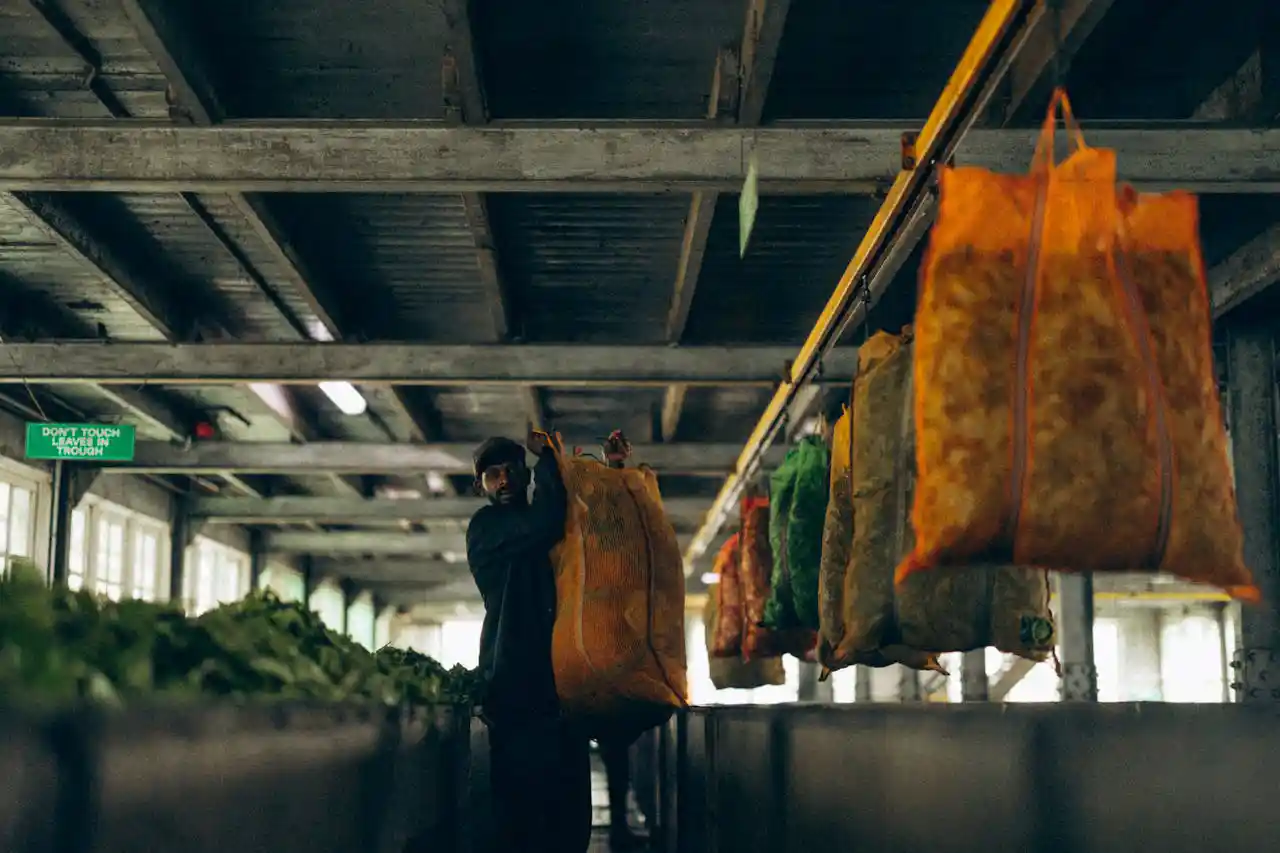
The Premium Experience (Select Estates):
Higher-end estates like Ceylon Tea Trails' properties or boutique plantations offer extended experiences. Think multiple-hour immersions where you can actually participate in plucking (harder than it looks), watch the entire processing cycle, attend masterclasses led by tea sommeliers, and pair different teas with local cuisine.
Some estates offer accommodation in restored colonial bungalows where plantation managers once lived. Waking up surrounded by tea terraces, taking morning walks through the fields, watching workers begin their day at dawn – it's immersive tourism done right.
The Self-Guided Adventure:
In places like Ella and Haputale, you can simply walk into the tea fields. No formal tour, no tickets, just you and the landscape. Ask locals for directions, follow the trails between estates, chat with workers if they have time. It's less structured but often more authentic, though you'll miss the detailed explanations and processing insights.
The Best Tea Plantations to Visit: A Curated List
Not all tea estates are created equal. Here's where to go based on what you're actually looking for.
Nuwara Eliya Region
This is tea tourism central. At 1,900 meters above sea level, Nuwara Eliya produces high-grown tea with delicate, nuanced flavors. The town itself feels like a bizarre English transplant with its colonial architecture, golf courses, and genuinely cool climate.
Pedro Tea Estate
The OG. This is where James Taylor planted his first bushes back in 1867. Established as a commercial operation in 1885, Pedro sits in the shadow of Pidurutalagala, Sri Lanka's highest peak.
The 20-minute tour covers the complete manufacturing process from grading to packaging, using colonial-era equipment that's still operational. The Lovers Leap Ethical Tea Boutique above the factory offers stunning views of Bomburella Reservoir and serves as your tasting venue.
Pro tip: Pedro produces light tea, so most processing happens at night. Visit during daytime for tours, but don't expect to see the full operation running unless you time it right.
Entry: 250 LKR (about $0.75 USD)
Best for: History buffs and first-timers wanting the foundational experience
Damro Labookellie Tea Estate
Set across 5,000 acres of gorgeous rolling hillside, Damro is the scenic champion. Located 20km north of Nuwara Eliya between Kandy and Nuwara Eliya on the A5, it's easily accessible but feels unblemished and unspoiled.
Originally part of the Mackwoods conglomerate (founded 1841), Damro features a modern visitor center and café. The brief free tour provides a solid overview without overwhelming detail, making it perfect for families with kids or anyone who wants the experience without committing hours.
The real draw here is wandering the terraces. You can walk through working tea fields, watch pluckers at work (respect their space – they're working, not performing), and capture those Instagram-worthy shots everyone posts from Sri Lanka.
Entry: Free
Best for: Photographers, scenic beauty lovers, families
Blue Field Tea Garden
Founded in 1921 in Ramboda (20km north of Nuwara Eliya), Blue Field produces high-grown tea at 1,285 meters elevation. They churn out about 30,000kg monthly, and while tours are shorter than other estates, they're professional and informative.
The onsite restaurant is genuinely good, making this an excellent stop if you're driving between Kandy and Nuwara Eliya anyway. Visitors can wander the surrounding terraces freely – just be respectful of workers and don't trample the bushes.
Note: No processing happens on Sundays, so visit weekdays for the full experience.
Entry: Free
Best for: Road trip stops, restaurant seekers, casual visitors
Mackwoods Tea Centre
Probably the most touristy option, but popular for good reason. Perched at 1,500 meters, Mackwoods showcases hand-picked silver tips and orange pekoe varieties. Established in 1841, it's the second-oldest producer in Sri Lanka.
The tour is short (good for attention spans), the tea tasting is free, and you can buy cake to accompany your cuppa in a tea room with ridiculous views. Yes, the gift shop is expensive. Yes, you'll probably buy something anyway.
Entry: Free (with tea tasting included)
Best for: Convenience, quick visits, guaranteed good views
Haputale Region
Less polished than Nuwara Eliya but often more rewarding for serious tea enthusiasts. The region is quieter, less touristy, and home to some genuinely special estates.
Dambatenne Tea Factory
Built by Thomas Lipton himself (yes, that Lipton), Dambatenne runs informative tours showing the complete production process. Go early morning to see the machines in full operation and workers processing the morning's harvest.
The factory sits near Lipton's Seat, a viewpoint Lipton used to survey his empire. The hike or drive up is worth it alone – on clear days, you can see all the way to the southern coast. A small shack at the top serves tea in plastic cups with fresh roti, and honestly, that simple setup with those views beats any fancy tea room.
Best for: Serious tea lovers, historical significance, killer views
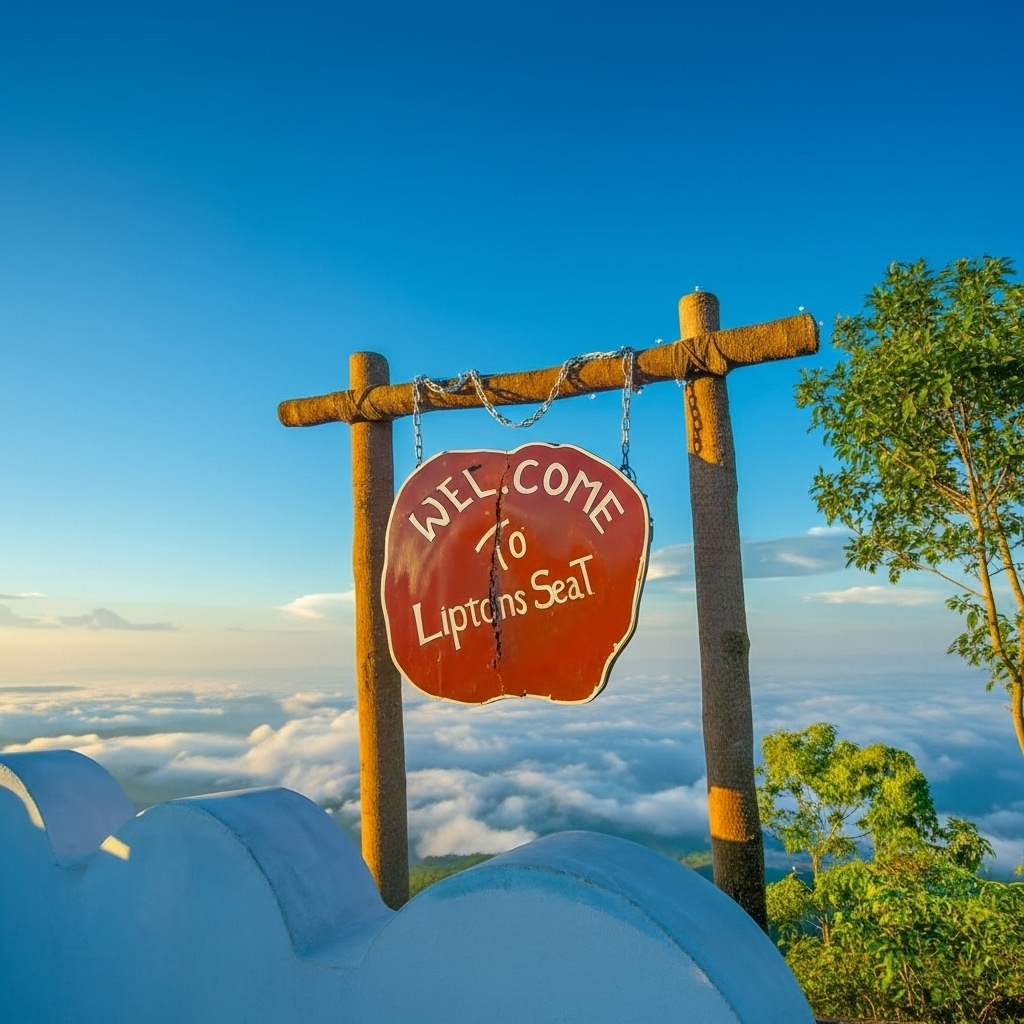
Ella Region
Ella is a backpacker hub with a chill vibe and tea-covered hills all around. Most plantations don't offer formal tours, but the area is perfect for independent exploration.
You can walk through working estates, follow trails between villages, and experience tea country without the structured tourism experience. It's authentic but requires more initiative and you'll miss the detailed processing explanations.
Best for: DIY explorers, budget travelers, casual hikers
Kandy Area
If you're short on time and can't venture deeper into hill country, Kandy offers several accessible options.
Geragama Tea Factory (Giragama)
About 20km west of Kandy in Kadugannawa, Geragama gets rave reviews for its detailed English-language tours. The guide explains the process thoroughly without rushing, making complex processing steps understandable.
Best for: Detailed learners, Kandy-based visitors, quality explanations
Coastal Wild Card
Hundungoda Tea Estate (Koggala)
One of Sri Lanka's few coastal tea plantations near Galle, Hundungoda specializes in rare white tea production. Tours are short, usually run daily, but call ahead to confirm. It's a completely different experience from hill country estates – hotter, different flavors, unique terroir.
Best for: Southern coast travelers, white tea enthusiasts, something different
The Tea Processing Journey: From Bush to Cup
Understanding how tea is made transforms the tasting experience from "this is nice" to "holy shit, this took incredible skill and precision."
Step 1: Plucking
Skilled workers move through rows at dawn when leaves are freshest. They're looking for "two leaves and a bud" – the tender top growth that produces the best flavor. Good pluckers can harvest 20-30kg daily while covering 10+ kilometers on steep, uneven terrain. It's brutally physical work requiring genuine expertise.
Watch them for five minutes and you'll understand why mechanization hasn't replaced this workforce. The precision, the speed, the ability to identify perfect leaves while moving – it's an art form.
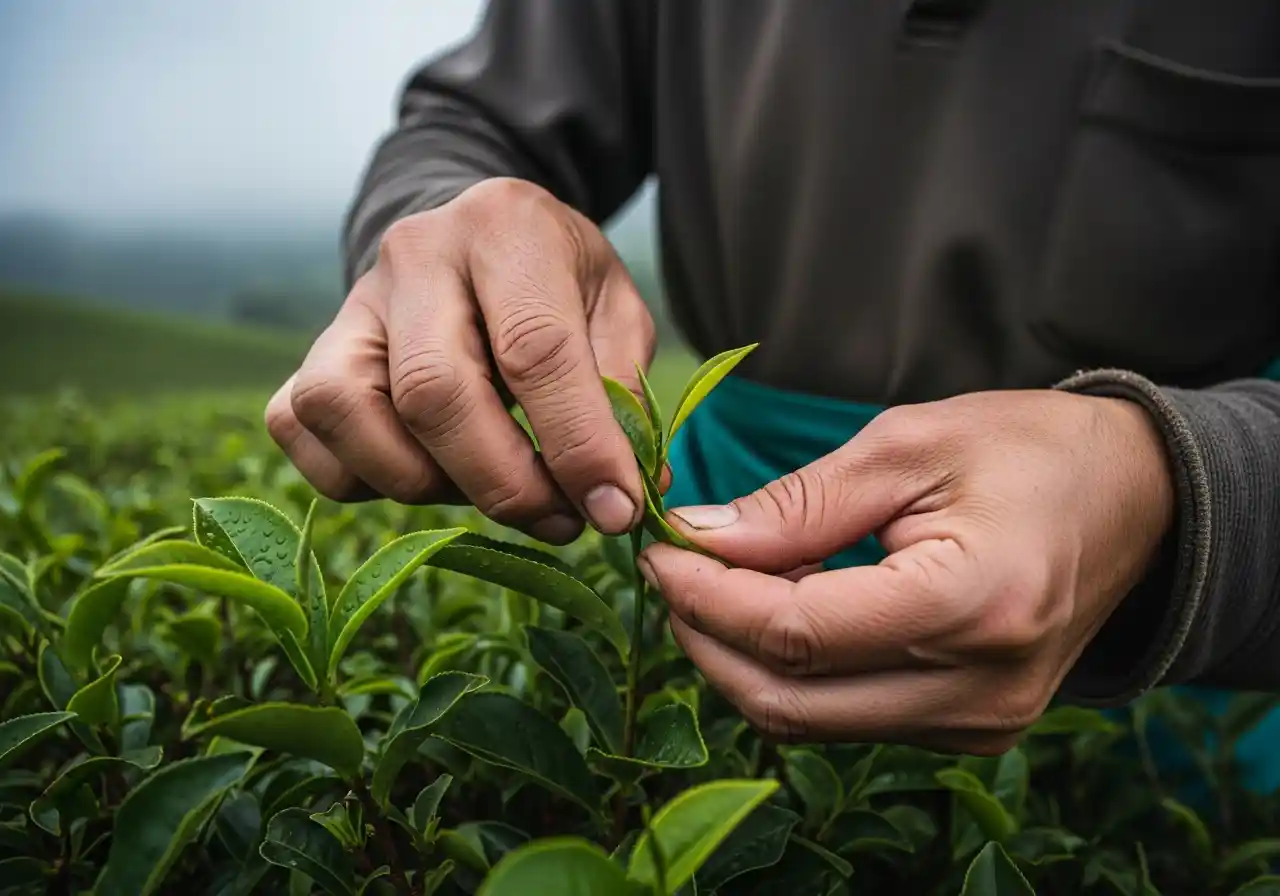
Step 2: Withering
Fresh leaves arrive at the factory within hours of plucking. They're spread in troughs or racks for 12-18 hours under controlled temperature and humidity. This reduces moisture content from 75-80% to about 60-70%, making leaves pliable for rolling.
The withering room smells grassy and fresh. Temperature and airflow are critical – too hot and leaves cook, too cold and they don't soften properly.
Step 3: Rolling
This is where magic starts happening. Withered leaves go through rolling machines (often the same vintage equipment from Taylor's era) that twist and break leaf structure, releasing enzymes and essential oils. The rolling process develops flavor and aroma while preparing leaves for oxidation.
The sound in the rolling room is hypnotic – this rhythmic mechanical churning that's been the soundtrack to Ceylon tea production for over a century.
Step 4: Oxidation (Fermentation)
Rolled leaves spread in cool, humid conditions where they react with oxygen. This is the crucial step that determines tea type and flavor profile. Black tea oxidizes fully, green tea not at all, oolong partially.
Factory workers monitor this process obsessively, checking color, smell, and texture constantly. The transformation from green to copper-brown happens gradually, and timing it perfectly separates good tea from exceptional tea.
Step 5: Drying (Firing)
Leaves move to massive dryers (often "Sirocco" models dating to the 1870s) where hot air halts oxidation and reduces moisture to about 3%. This locks in flavor and ensures long-term stability.
The drying room is hot, loud, and smells incredible – that distinctive black tea aroma concentrated to almost overwhelming intensity.
Step 6: Sorting and Grading
Dried tea gets sorted by size and quality. Machinery separates whole leaves from broken pieces, which are then graded into categories like Orange Pekoe, Broken Orange Pekoe Fannings, and yes, "dust" (which despite the name, makes your standard breakfast tea).
Higher grades command premium prices. Lower grades aren't bad quality – they're just different sizes suited to different brewing styles and markets.
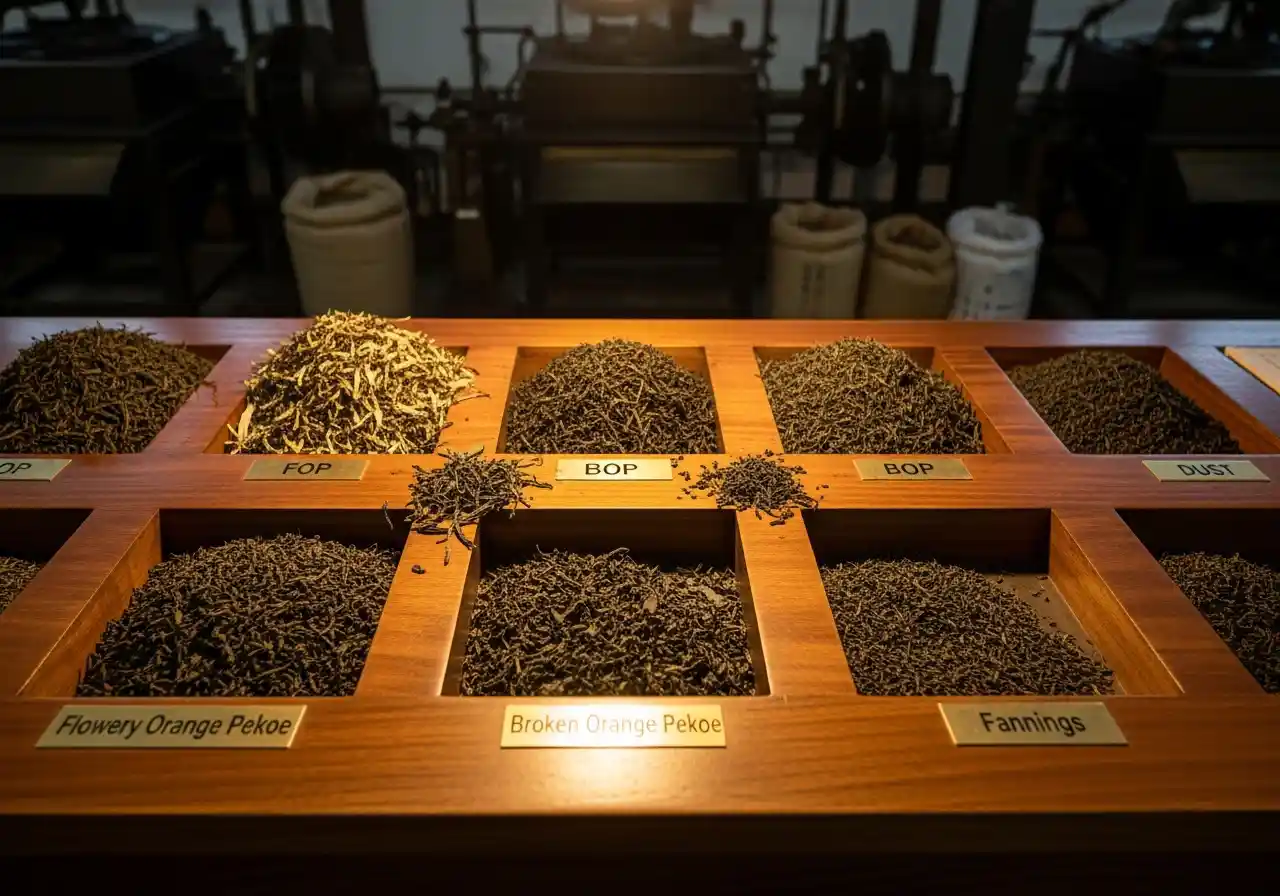
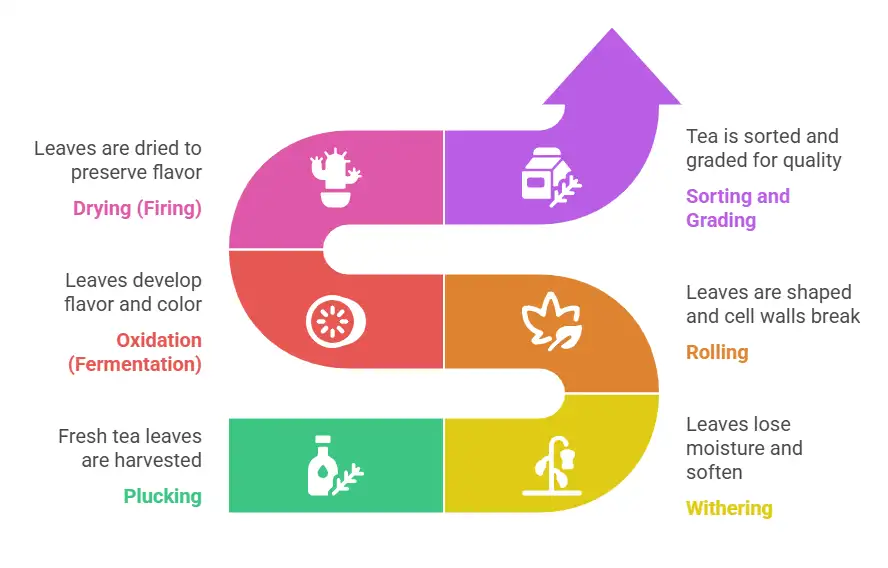
The Tea Tasting Experience: Beyond "It Tastes Like Tea"
Most tours end with a tasting session, and this is where you discover your palate is way more sophisticated than you thought.
Ceylon tea varies dramatically based on elevation and region:
High-Grown Tea (Above 1,200m)
Regions: Nuwara Eliya, Haputale
Flavor: Delicate, light, subtle
Notes: Floral, fruity, sometimes citrus hints
Best served: Without milk to appreciate nuanced flavors
Medium-Grown Tea (600-1,200m)
Regions: Kandy, Dimbula
Flavor: Balanced, versatile
Notes: Rich but not overpowering, smooth
Best served: Works with or without milk
Low-Grown Tea (Below 600m)
Regions: Galle, Matara (coastal areas)
Flavor: Strong, bold, robust
Notes: Malty, full-bodied
Best served: Perfect with milk, classic breakfast tea style
During tastings, you'll learn to identify these characteristics. Slurp the tea (yes, really – it aerates and spreads it across your palate). Note the color, the aroma, the initial taste, the finish. It's basically wine tasting but for people who want to stay functional.
The Varieties You'll Encounter:
Black Tea
The standard. Fully oxidized, ranges from delicate high-grown to robust low-grown. This is what most people mean when they say "Ceylon tea."
Green Tea
Unoxidized, lighter in caffeine, more grassy and vegetal. Sri Lanka produces less green tea than black, making it slightly harder to find on tours.
White Tea
Minimal processing, very delicate, expensive. Made from young buds and leaves. Hundungoda Estate near Galle specializes in this rarity.
Flavored and Blended Teas
Many estates produce specialty blends with cinnamon, cardamom, vanilla, or fruit essences. Purists might sniff at these, but honestly, some are delicious.
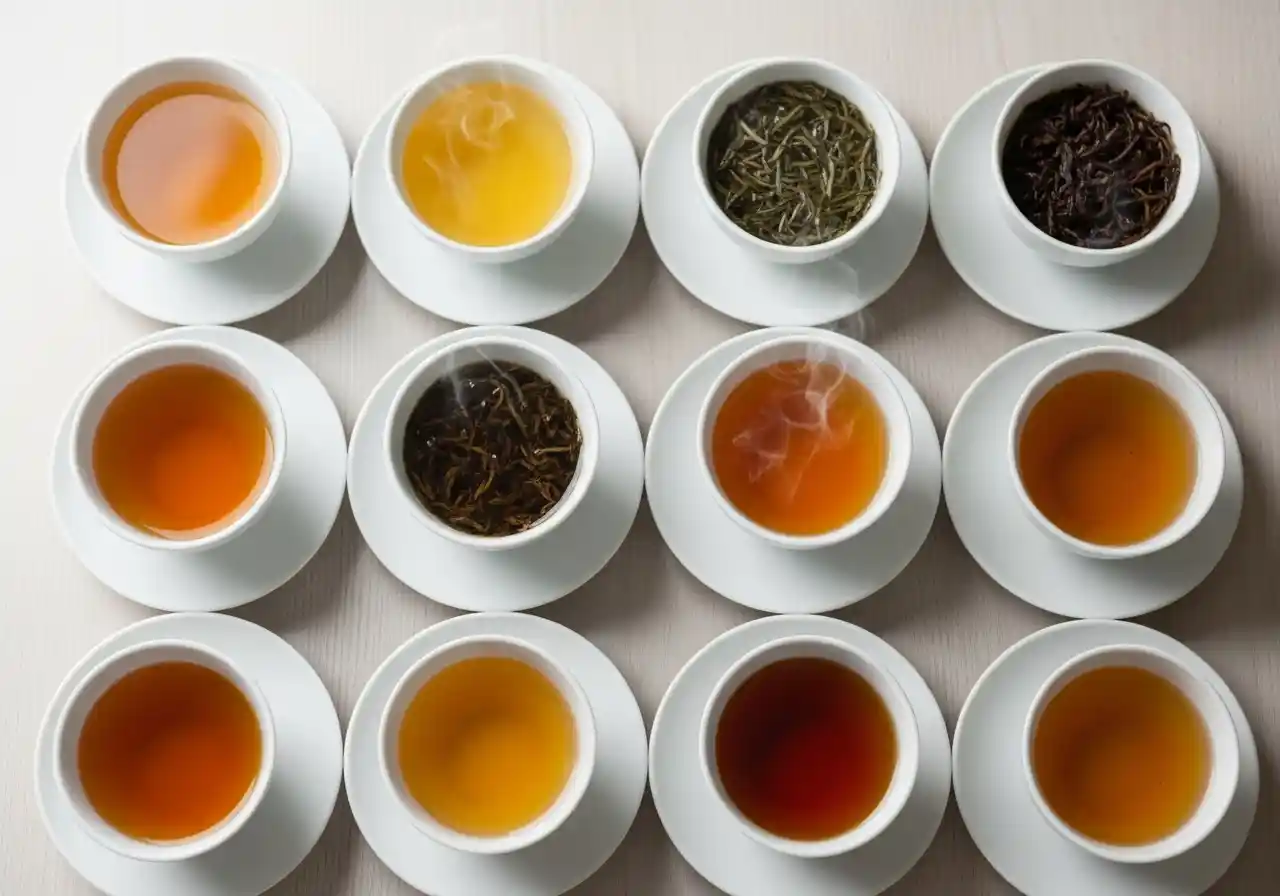
Timing Your Visit: Season, Weather, and Optimal Experiences
Tea grows year-round in Sri Lanka, but your experience varies significantly with timing.
Best Overall: January to April
This is peak season for hill country. Weather is dry and cool, skies usually clear, factories operate at full capacity. You'll see the complete process in action, get the best views, and experience ideal conditions for walking through plantations.
Temperatures in Nuwara Eliya average 17°C (low 60s F), so pack layers. Seriously, bring a fleece or jacket. You're not in tropical Sri Lanka anymore; you're in "Little England" where mornings can be genuinely cold.
Alternative Good Period: July to September
The Uva region (around Haputale) experiences its quality flush during this time, producing some of the year's most flavorful leaves. It's slightly quieter tourist-wise, and Haputale in August is particularly lovely with fresh air and active estates.
Avoid: May and June
Southwest monsoon brings heavy rain to hill country. Trails become muddy nightmares, views disappear in persistent cloud cover, and some factories close for cleaning or repairs. Unless you're really into atmospheric mist and don't mind getting soaked, skip these months.
Time of Day Matters:
Early Morning (6-9 AM)
Tea plucking happens at dawn when leaves are freshest. Early factory tours show the initial processing stages with fresh leaves coming in. The light is also spectacular for photography, with mist often clinging to terraces.
Late Morning/Midday (10 AM-2 PM)
Full factory operations. You'll see withering, rolling, oxidation, and drying all happening simultaneously. Busiest tourist time though, so expect crowds at popular estates.
Afternoon (3-5 PM)
Fewer tourists, golden hour light for photography, but you might miss some processing stages. Good compromise if you're not a morning person.
Can You Actually Pick Tea? (Yes, But It's Humbling)
Some plantations offer hands-on plucking experiences, and I strongly recommend trying this if available. It's genuinely eye-opening.
You'll be given a basket and basic instruction: two leaves and a bud, only the tender top growth. Sounds simple. It's not.
First, identifying the perfect leaves at speed is harder than it looks. Second, your back will hurt from the constant bending. Third, your fingers will cramp from the repetitive motion. Fourth, you'll cover maybe 100 meters in an hour and collect embarrassingly little while the woman working next to you moves like a graceful harvesting machine and fills three baskets in the same time.
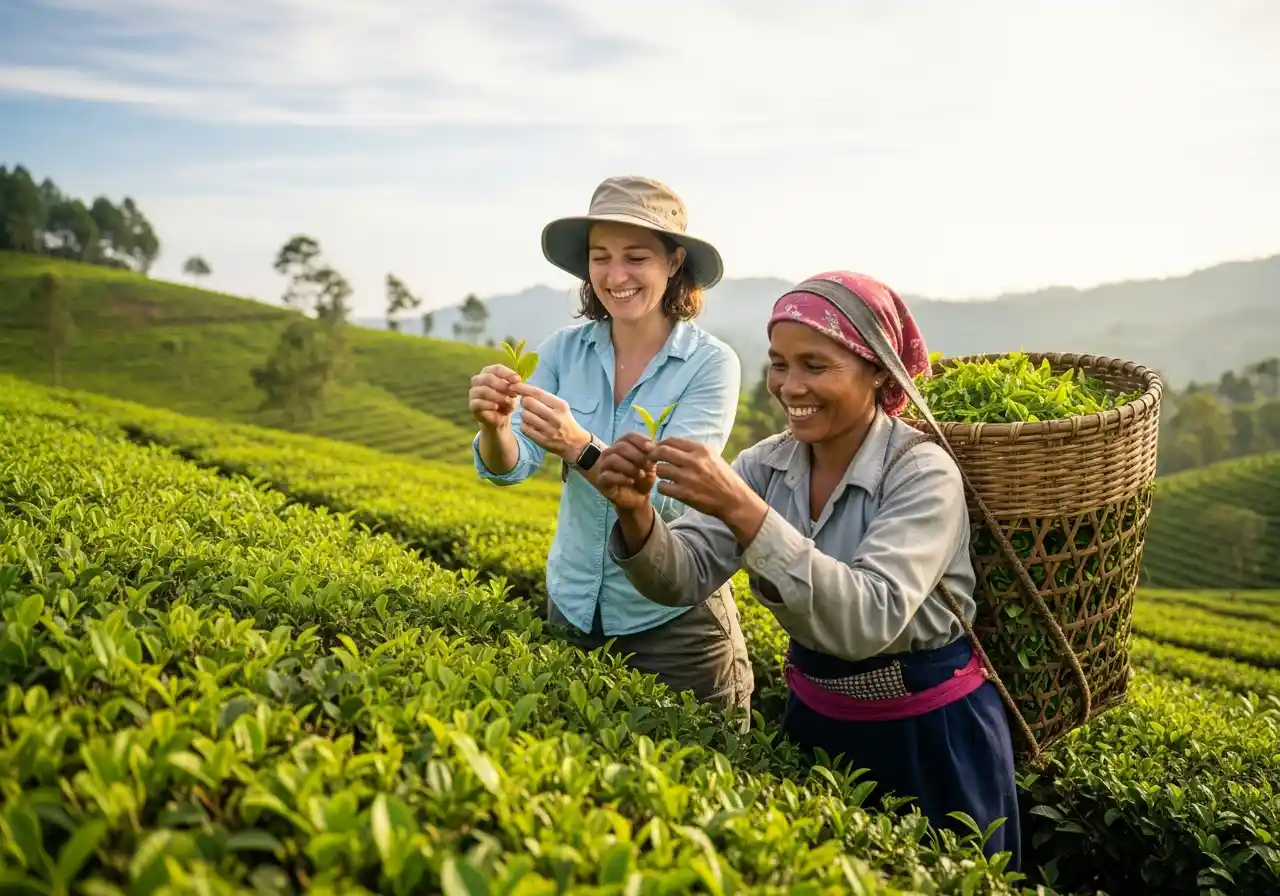
This experience does more to build appreciation for Ceylon tea than any factory tour. Those workers you see moving efficiently through the fields? They're athletes. They're artisans. And they deserve way more recognition than they typically receive.
The ethical dimension of tea tourism is complicated. Many estates have improved working conditions and pay in recent years, but concerns about fair wages and worker welfare persist. Responsible tourism means choosing estates that demonstrate genuine commitment to worker welfare, sustainable practices, and fair trade principles.
Tea Estate Accommodation: Sleep Where Planters Once Lived
If you have the budget, staying on a tea estate elevates the experience from day trip to genuine immersion.
Ceylon Tea Trails (Premium)
Five restored planter bungalows scattered across Bogawantalawa Valley, each a luxury boutique property with 4-6 rooms. You're basically living as a colonial tea baron, minus the whole problematic colonialism thing.
Expect: Private butler service, gourmet meals featuring estate-grown ingredients, guided plantation walks, tea tastings, and some of the most stunning views in Sri Lanka. Prices match the luxury (think $500+ per night), but this is bucket-list accommodation.
Heritance Tea Factory (Upper Mid-Range)
An actual converted tea factory in Nuwara Eliya, Heritance offers the unique experience of staying inside industrial heritage. The property maintains its factory aesthetic while providing modern comfort.
They run their own mini-plantation and tea factory, giving guests exclusive access to the complete process. Pool, spa, excellent restaurant, and that authentic factory atmosphere make it memorable.
Estate Bungalows (Mid-Range to Budget)
Many working estates offer bungalow accommodation ranging from restored colonial elegance to basic but comfortable rooms. These provide authentic immersion at more accessible prices.
You'll wake to tea terraces outside your window, take morning walks through working fields, interact with estate staff, and experience the rhythm of tea country life. Amenities vary wildly, so research carefully.
Guesthouses in Tea Country Towns (Budget-Friendly)
Nuwara Eliya, Ella, and Haputale have numerous guesthouses and budget hotels in or near tea country. While you won't be on the estate itself, you're still surrounded by tea culture and can easily visit plantations during the day.
Expect to pay $20-50 USD per night for comfortable budget options with good breakfast and helpful hosts who'll arrange tours and transport.
Booking Your Tea Tour: Practical Logistics
Do You Need to Book in Advance?
For most major estates, no. You can show up during operating hours (typically 8 AM-5 PM) and join a tour. Many offer free tours with the expectation you'll buy tea afterward.
Exceptions: Premium estates with accommodation, special experiences like tea masterclasses or extended plucking sessions, and peak season visits to very popular estates might require reservations.
How to Get There
By Train: The Kandy-Nuwara Eliya-Ella route is one of the world's most scenic train journeys, winding through tea country with stunning views. Book reserved seats well in advance (30 days is recommended) or embrace the chaos of unreserved cars where you can hang out the open doors for photos (safely, obviously).
By Private Driver: Most flexible option. Drivers can stop at multiple estates, wait while you tour, and adjust itinerary based on your interests. Expect to pay $40-70 USD daily depending on vehicle and distance.
By Tuk-Tuk: For Nuwara Eliya-based exploration, many visitors hire tuk-tuks for half or full-day tours hitting 2-3 estates plus waterfalls and other attractions. More atmospheric than a car, cheaper than a private driver, but less comfortable for long distances.
By Bus: Local buses run between tea towns, and from there you can get tuk-tuks to estates. Cheapest option but requires more time, patience, and willingness to figure things out as you go.
Tour Length Considerations
Quick visit: 2-3 hours (one estate tour plus tasting)
Half day: 4-5 hours (2 estates, lunch, maybe a viewpoint)
Full day: 8+ hours (multiple estates, extended experiences, scenic stops)
Overnight: 2-3 days (proper immersion with estate stay)
Family-Friendly Tea Tourism: Can Kids Do This?
Absolutely. Tea plantation tours work surprisingly well for families, though some estates are better suited than others.
Kid-Friendly Estates:
Damro and Blue Field offer shorter tours that don't overwhelm young attention spans. The open terraces provide space to run around (under supervision), and the novelty of seeing tea processing holds interest for kids who've never thought about where tea comes from.
Mackwoods includes cake with tea tasting, which is basically kid bribery.
Tips for Visiting with Children:
Pack snacks and water. Estate canteens exist but might not stock kid-friendly options.
Choose morning visits when kids are fresh and weather is cooler.
Let them ask questions. Most guides love enthusiastic young visitors and will adjust explanations to be more engaging.
Take breaks. Don't rush through multiple estates in one day.
Make it interactive. If plucking experiences are available, kids often love the hands-on aspect.
The Scenic Train Ride: Kids generally love the train journey through tea country, especially if you can snag seats by the open doors (hold on to them tightly). The Ella-Nuwara Eliya section is shorter than the full Kandy-Ella route if you're worried about restless kids.
Sustainable and Ethical Tea Tourism
Let's address the elephant in the plantation. Ceylon tea's history is intertwined with colonialism, and many of the workers descended from Tamils brought from India as indentured laborers. That legacy creates ongoing social and economic issues that responsible visitors should understand.
Supporting Ethical Estates:
Look for estates with:
- Fair trade certification
- Transparent worker welfare programs
- Sustainable agricultural practices
- Community development initiatives
- Reasonable working hours and above-minimum wages
Some estates actively working on these fronts:
- AMBA Estate (artisanal focus, worker welfare emphasis)
- Estates participating in Rainforest Alliance certification
- Properties that clearly communicate their sustainability and worker support programs
What You Can Do:
Buy directly from estates when possible. This puts more money into the plantation economy versus middlemen.
Ask questions about worker welfare. Estates doing good work are usually proud to discuss their programs.
Respect workers. They're doing difficult physical labor. Don't treat them as photo props or interruptions to your experience.
Pay fair prices. If tea seems suspiciously cheap, question whether workers are being fairly compensated.
Support tea tourism that provides jobs beyond picking and processing.
The industry is evolving. More estates are adopting organic practices, improving worker housing and education access, and implementing fair wage structures. Tourism revenue can support these improvements when directed to ethical operations.
Beyond Tea: What Else to Do in Tea Country
Tea plantations exist in some of Sri Lanka's most beautiful landscapes, so build in time for other experiences.
Horton Plains National Park
About two hours from Nuwara Eliya, this UNESCO World Heritage Site features dramatic cliffs, Baker's Falls, and World's End, a precipice dropping nearly 1,000 meters with views to the Indian Ocean on clear days. Go early morning before crowds and fog roll in.
Scenic Train Rides
Even if you're not using trains for transport, consider taking the train for part of your journey just for the experience. The Nuwara Eliya-Ella section is particularly spectacular.
Victoria Park (Nuwara Eliya)
Small entry fee gets you access to this colonial-era park perfect for bird watching, flower viewing, or just peaceful strolling. Good break between tea estate visits.
Single Tree Hill (Nuwara Eliya)
Short hike up to radio towers with sunset views over mountains and town. Tea plants grow right up to the trail.
High Tea at the Grand Hotel
Yes, it's touristy. Yes, it's colonial nostalgia. But having high tea in a British-style hotel at 6,000 feet in Sri Lanka while planning your next tea plantation visit is peak meta tourism, and sometimes you just lean into it.
Waterfalls
The hill country is waterfall central. St. Clair's Falls, Devon Falls, Ramboda Falls – these often get combined with tea tours for varied scenery.
Nine Arch Bridge (Ella)
Instagram-famous railway bridge that's legitimately impressive. Time your visit for when trains pass (ask locals) for the full effect.
The Tea You'll Want to Buy (And How Much)
You will buy tea. It's inevitable. Here's how to buy smart.
What to Look For:
Freshness: Tea is best within 6-12 months of production. Check dates when possible.
Grade: Higher grades (Orange Pekoe, Flowery Orange Pekoe) cost more but offer better quality. Lower grades work fine for milk tea or if you prefer stronger brews.
Packaging: Proper sealed packaging preserves freshness. Beautiful tins are nice but not necessary if you'll transfer tea to your own containers at home.
Regional Specificity: Don't just buy "Ceylon tea." Get specific: Nuwara Eliya Orange Pekoe, Dimbula BOPF, Uva high-grown. These distinctions matter.
Price Reality:
Estate shops charge more than local shops but offer guaranteed freshness and direct support to the plantation.
Good quality loose leaf Ceylon tea ranges from $8-20 USD per 100g at estate shops, less in town markets.
Premium grades and specialty varieties (white tea, silver tips) can hit $40+ per 100g.

Shipping Considerations:
Tea is light, doesn't spoil, and packs easily. No special customs concerns for most countries (check your specific regulations). Buy more than you think you'll need because shipping from home costs more than buying on-site, and that tea you fell in love with during your visit tastes even better when it reminds you of those misty mornings in tea country.
Frequently Asked Questions Answered
Can I visit tea plantations in low season?
Yes, though the experience changes. Factories might operate on reduced schedules, tea shops along trails close, and weather can be unpredictable. You'll have fewer crowds, which is nice, but bring rain gear and confirm operating hours before visiting. Some estates close for maintenance during monsoon months.
Are guided tours actually necessary?
For understanding the processing, yes. The machinery and chemical transformations happening aren't self-explanatory. For just experiencing the scenery, no. You can walk through plantations independently in many areas, especially around Ella. But you'll miss the educational component that transforms tea from beverage to fascinating agricultural product.
How much time should I allocate for tea country?
Minimum: 2 days (one for Nuwara Eliya area, one for travel/flexibility)
Comfortable: 3-4 days (multiple estates, train journey, nearby attractions)
Ideal: 5-7 days (deep immersion, various regions, estate accommodation, side trips)
Is accommodation on estates worth the premium?
If budget allows, absolutely. The experience of waking up surrounded by tea terraces, taking morning walks through working plantations, and having exclusive access to estate tours and tastings justifies the cost. But budget options in nearby towns still provide access to everything; you just commute to the estates rather than sleeping among them.
What should I wear?
Layers are key. Mornings are cool, midday can be warm, evenings get cold again. Comfortable walking shoes with good grip (tea terraces get slippery). Long pants or a skirt if visiting factories (modesty and safety). Rain jacket even in dry season because weather changes quickly. Hat and sunscreen for sunny days.
Can vegetarians/vegans handle tea country food?
Sri Lankan cuisine is generally veg-friendly, and hill country even more so. Rice and curry platters offer multiple vegetarian options. Hotels and guesthouses accommodate dietary needs easily. Estate cafés serve baked goods, sandwiches, and snacks with vegetarian choices. You'll be fine.
Is it safe to drink tap water after tea tastings?
No. Stick to bottled or filtered water. Most estates provide bottled water or boiled/filtered options. Bring a reusable bottle and refill from reliable sources.
The Bottom Line: Is Ceylon Tea Country Worth Your Time?
Here's my honest take: if you have any interest in tea, agriculture, colonial history, stunning landscapes, or unique cultural experiences, Ceylon tea country is absolutely worth prioritizing in your Sri Lanka itinerary.
Even if you're ambivalent about tea (shocking, I know), the hill country's beauty alone justifies the visit. Add in the fascinating production process, the ability to taste tea at source, and the cultural immersion, and it becomes one of those experiences that exceeds expectations.
The best part? It's not Disney-fied to death. Yes, touristy estates exist, but you can still find authentic working plantations where tourism is supplementary to tea production, not the primary business. You're witnessing real agriculture, real people doing skilled work, real history that's still actively shaping Sri Lanka's economy and identity.
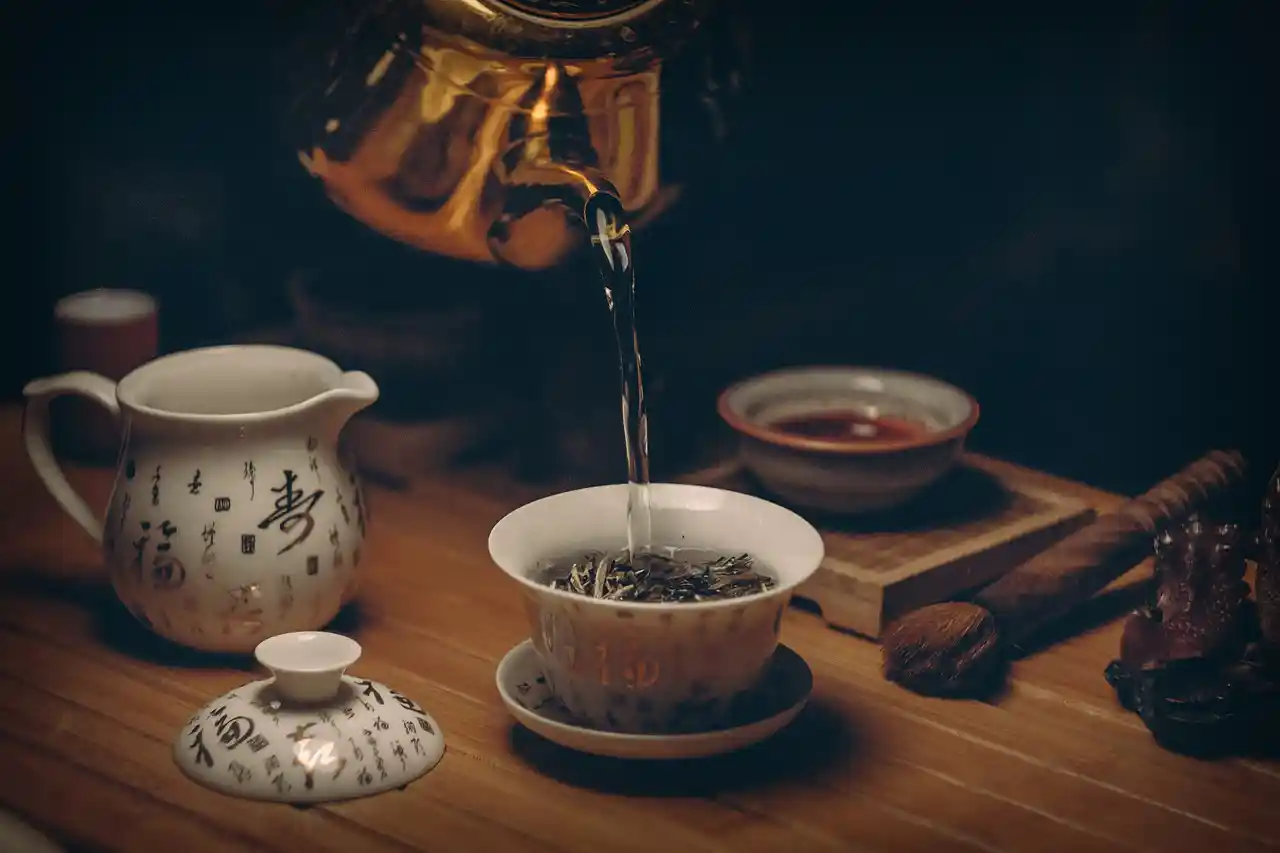
Three days in tea country gave me a deeper appreciation for a beverage I'd been drinking mindlessly for decades. I now understand why tea people get so specific about origins and grades and brewing temperatures. When you've seen the skill involved in plucking, the precision required in processing, the variables that affect flavor, you can't go back to thinking tea is just hot leaf water.
Plus, those views. Those impossibly green, perfectly manicured terraces rolling across mountains into the mist. The colonial bungalows perched on hillsides. The workers moving through rows with practiced grace. The smell of fresh tea leaves and wood smoke from village houses. The cool mountain air at 6,000 feet.
It's one of those places that photographs well but feels better. So book your tours, pack your fleece, prepare your palate, and prepare to never look at your morning cup the same way again.
Because Ceylon tea isn't just a drink. It's 150+ years of history, thousands of skilled workers, a landscape transformed by agriculture, and a cultural identity wrapped up in leaves picked by hand at dawn. And you get to witness all of it while sipping some of the finest tea on earth, surrounded by scenery that belongs on screensavers.
That's not bad for a beverage tourism experience.
Ready to explore Ceylon's tea legacy? Plan your visit between January and April for optimal weather, book accommodation in Nuwara Eliya or Ella, and give yourself at least three days to really do the region justice. Your taste buds and camera roll will thank you.
Share this article

Tharindu Madhusanka
Travel blogger, photographer, and lifelong explorer of Sri Lanka’s hidden gems.
View all posts

